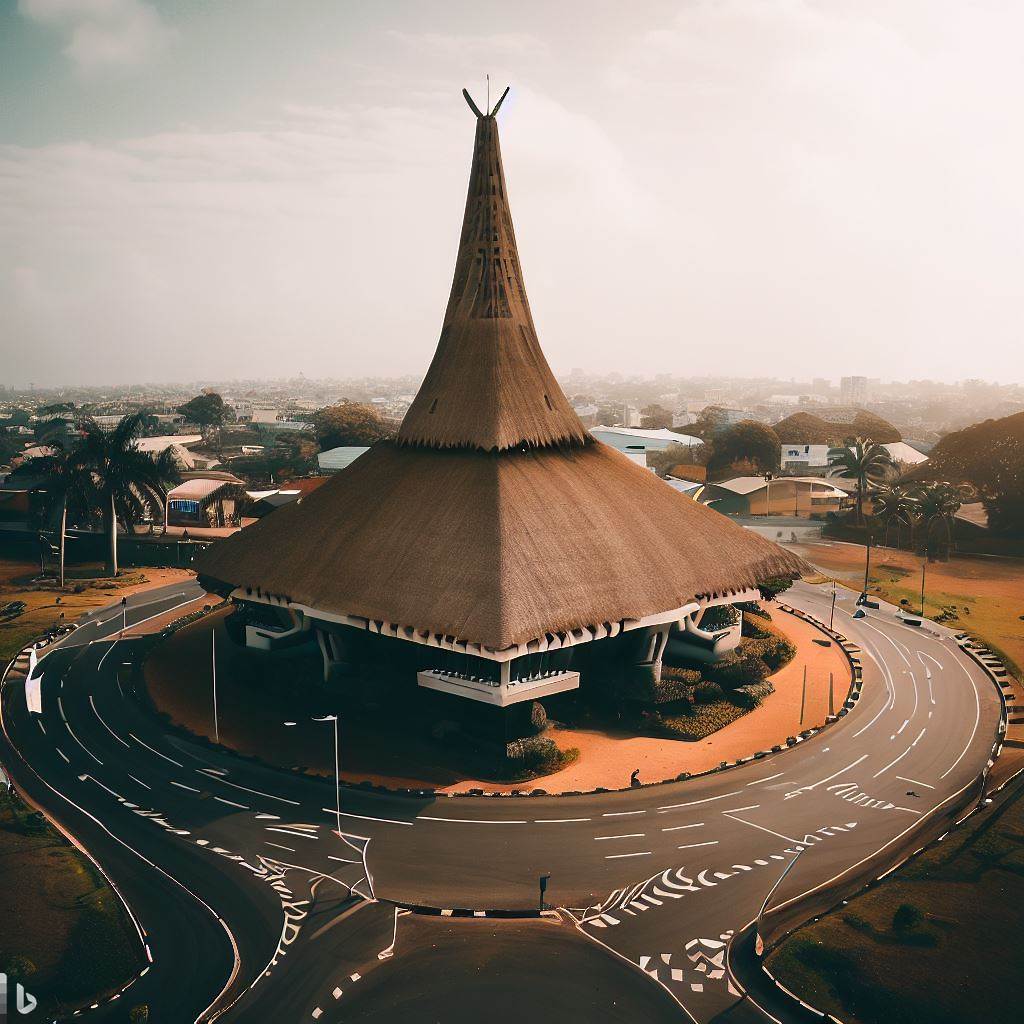Introduction
Welcome to Nigeria, let’s explore Nigeria’s most iconic architectural structures.
A land draped in architectural splendor, blending traditional and contemporary designs.
Nigeria’s architecture bears testament to a rich cultural legacy, showcasing diverse ethnic influences and periods of history. A tour of the nation’s most iconic structures offers a glimpse into this profound heritage.
The Zuma Rock, hovering over Niger State, exemplifies nature’s contribution to Nigeria’s architectural allure. Lagos, Nigeria’s vibrant megacity, boasts of Eko Atlantic, a testament to modern design.
The National Arts Theatre and the Central Bank of Nigeria both manifest mid-20th-century architectural finesse.
These structures serve as national symbols, instilling pride and unity. Each one bears a distinct cultural imprint, underscoring Nigeria’s heterogeneous fabric.
This architectural diversity mirrors the nation’s multi-ethnic, multi-lingual reality, fostering a unique identity.
These iconic edifices narrate the nation’s story – a chronicle of resilience, innovation, and cultural vibrancy. So join us, let’s embark on this exciting architectural tour of Nigeria.
National Mosque, Abuja
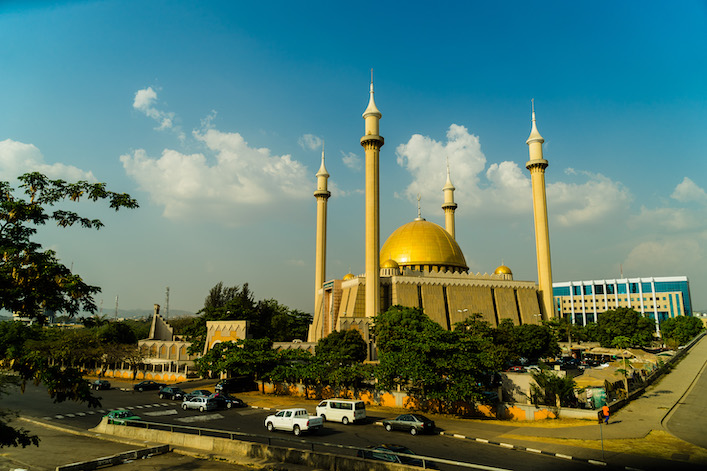
The National Mosque located in Abuja is a breathtaking architectural masterpiece that is considered to be one of the most iconic structures in Nigeria.
This magnificent structure is a must-see for tourists and locals alike, and is a testament to the rich cultural diversity of the country.
Design and Architecture
The design of the National Mosque blends modern and traditional Arabic architectural styles which creates an enchanting sight to behold. The mosque has four minarets that are 140 metres high, which makes them some of the tallest minarets in the world.
The mosque has a large prayer hall which can accommodate up to 10,000 worshippers at a time. The prayer hall is decorated with intricate designs and calligraphy, and the dome is adorned with gold leaf.
Historical and Religious Significance
The National Mosque has historical and religious significance as it is considered to be one of the most important Islamic centres in Nigeria.
The mosque was built in 1984 to commemorate the visit of Saudi Arabian King Fahd Bin Abdul-Aziz to Nigeria.
It serves as a place of worship and also has facilities for Islamic education and research. The mosque is also significant in that it portrays Nigeria’s commitment to religious freedom and tolerance.
Importance as a Symbol of Nigeria’s Muslim Community and Cultural Diversity
The National Mosque plays an important role in Nigeria’s Muslim community as it is the primary place of worship for Muslims in the country.
It is also a symbol of Nigeria’s rich cultural diversity as it promotes religious tolerance and celebrates the unique blend of modern and traditional architectural styles.
The mosque is a symbol of unity and integration, as people from different parts of Nigeria and the world come together for prayer and other Islamic activities.
The National Mosque in Abuja is a testament to Nigeria’s commitment to religious freedom, tolerance, and cultural diversity.
The mosque’s stunning design and architecture attracts people from all over the world, and it continues to play an integral role in the lives of Nigeria’s Muslim community.
Read: Innovation in Nigeria: Highlighting Futuristic Architecture
National Theatre, Lagos
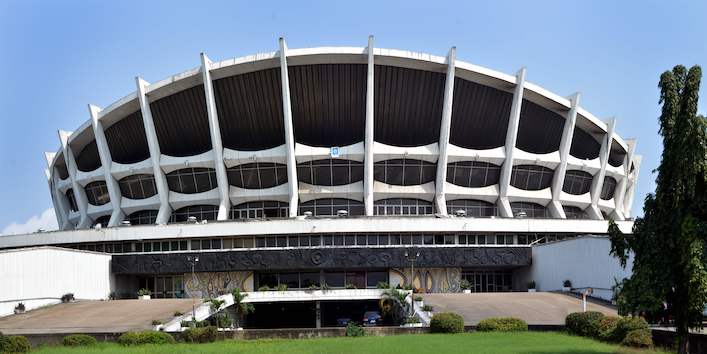
The National Theatre in Lagos, designed by Bulgarian and Nigerian architects, is a stunning piece of architecture with a dome-like structure flanked by tilted wings.
- It incorporates elements of traditional Nigerian architecture while being modern and functional.
- As a significant cultural hub in Nigeria, it hosts diverse artistic expressions, from dance and music performances to theatrical productions and exhibitions.
- The theatre facilitates global artistic and cultural exchange by hosting international acts.
- Over the years, it has had a profound impact on Nigerian culture, preserving traditional dances, music, and arts.
- The theatre promotes the country’s heritage and supports emerging talent, fostering Nigeria’s creative industry.
- It plays a vital role as a tourist attraction, representing Nigeria’s cultural heritage.
- Located in Lagos, Nigeria’s commercial capital, it becomes a unique and prominent destination.
- The National Theatre is an iconic structure, showcasing Nigeria’s creative potential and rich cultural history.
- Its architectural brilliance and intricate design are awe-inspiring and valuable to the country’s tourism industry.
Read: Breaking into the Architecture Scene of Nigeria: A Guide
National Museum, Lagos
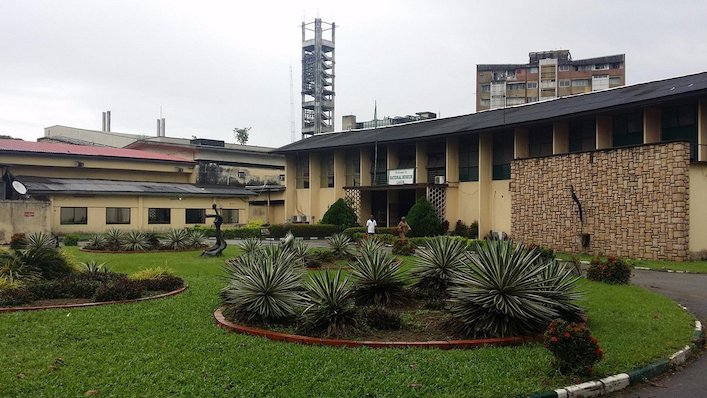
The National Museum in Lagos, designed by a group of Nigerian architects led by Augustine Adeyemi in 1957, stands as a beautiful piece of architecture reflecting Nigeria’s cultural values and heritage.
- The exterior features local materials like mud and clay with characteristic Nigerian motifs.
- Inside, a blend of traditional and modern aesthetics uses wood, steel, and glass materials.
- The museum houses a vast collection of Nigeria’s cultural artifacts, preserving its rich history.
- Visitors explore art, crafts, and archaeological artifacts to learn about the country’s diverse culture.
- The museum promotes Nigeria’s cultural tourism and preserves heritage for future generations.
- It attracts both local and international tourists, fostering cultural understanding and appreciation.
- A delightful experience, the museum provides insights into Nigeria’s rich history and cultural diversity.
Read: The Financial Perspective: Architect Salaries in Nigeria
Olumo Rock, Abeokuta

Olumo Rock in Abeokuta, Nigeria, stands 137 meters tall, with caves created by erosion over millions of years.
- Its unique architectural design attracts tourists and researchers alike.
- Historically, it served as a fortress during the Yoruba civil wars, providing a vantage point for the Egba people.
- The rock’s chambers offered refuge to the besieged warriors and families.
- Culturally, it is a sacred place in Egba folklore, believed to possess mystical powers.
- The annual Olumo festival honors the rock’s cultural significance.
- It plays a crucial role in promoting domestic and international tourism.
- Thousands of tourists visit yearly to marvel at its design and learn about its history.
- This popularity supports a thriving tourism industry, boosting the local economy and providing jobs.
- Olumo Rock remains a natural fortress, a cultural heritage site, and a significant tourist destination in Nigeria.
Zuma Rock, Abuja

Zuma Rock, a prominent natural landmark in Nigeria, attracts tourists to Madalla, Niger State, near Abuja.
- Standing 725 meters above sea level, its spherical shape stands out in the landscape.
- The smooth surface glimmers in sunlight, contrasting with the surrounding greenery.
- Historically and culturally, it symbolizes Nigeria’s strength and resilience, with spiritual significance.
- During the colonial era, locals used it as a hideout from slave traders.
- Zuma Rock plays a critical role in Nigeria’s tourism industry, attracting visitors interested in natural wonders.
- Tourists enjoy picture-taking and breathtaking views from the rock’s top.
- The government preserves the rock’s heritage by establishing a National Children’s Park and Zoo nearby.
- The park promotes flora, fauna conservation, and environmental awareness among tourists.
- Zuma Rock remains a beloved natural wonder and cultural icon, contributing to Nigeria’s tourism and heritage preservation.
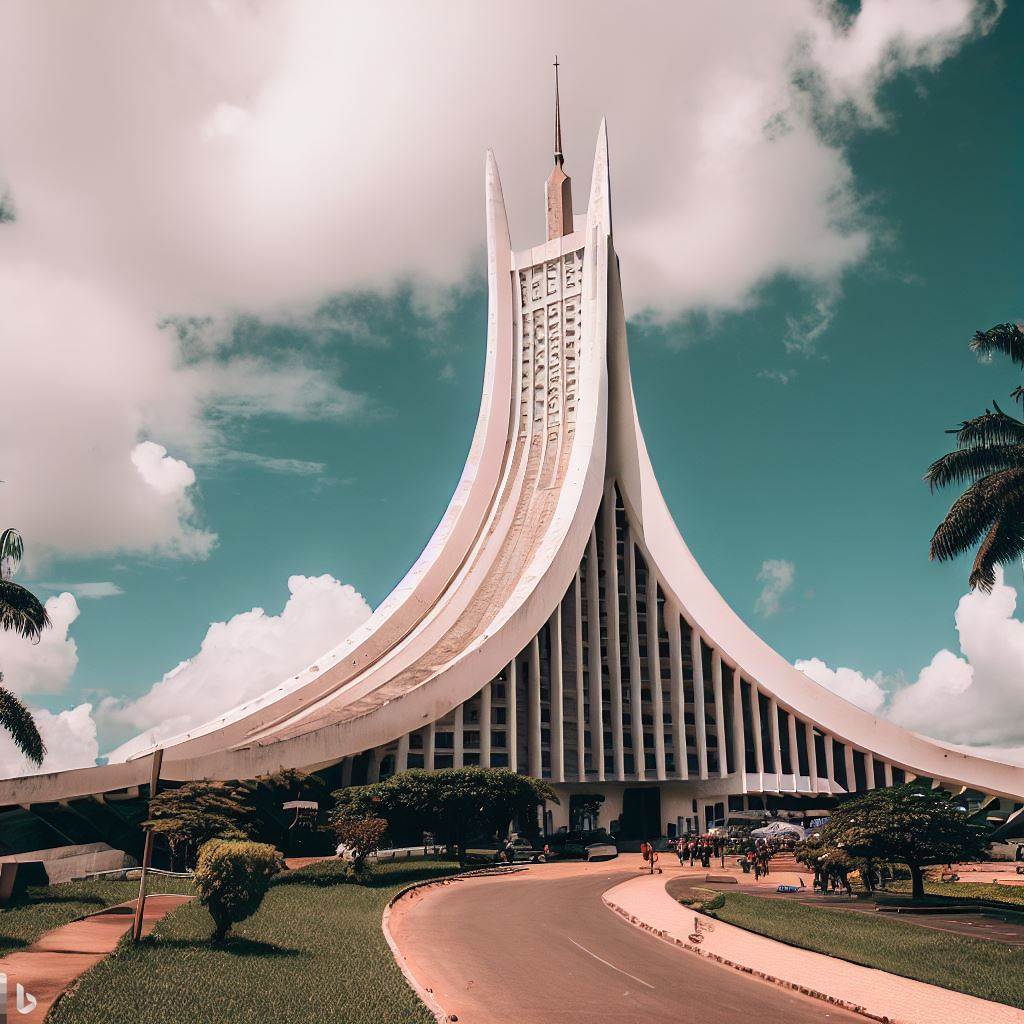
Great Walls of Benin, Edo State
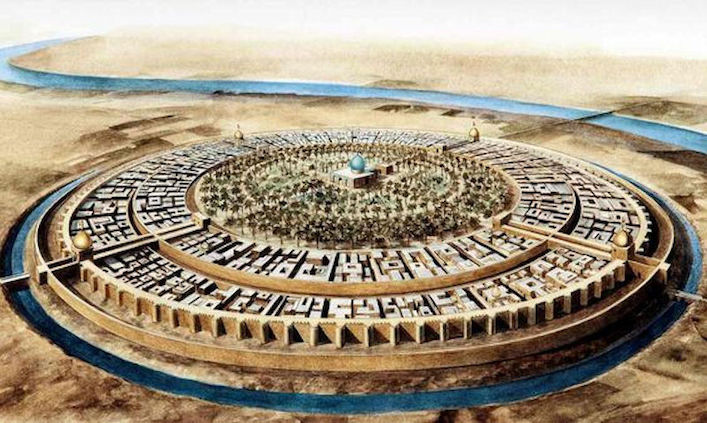
The Walls of Benin are a remarkable feat of engineering and cultural heritage site located in Edo State, Nigeria.
The walls were built during the reign of Oba Oguola in the 13th century and they are significant in terms of design, architecture, historical and cultural heritage.
Description of the walls’ design and architecture
The Great Walls of Benin known as Iya in the Edo language, are a set of earthworks and fortifications measures about 16,000km.
The walls were built using a technique known as the mud and earth approach, which involved using local materials such as mud, sand, and palm fronds.
The wall contains a moat and ramparts fortified by a combination of turrets and walls. It took more than 500 years to build the walls, making it one of the longest man-made structures in the world.
Read: Dissecting The Architect Registration Council of Nigeria
Historical and cultural significance of the walls
The Walls of Benin played a significant role in protecting the ancient Benin Kingdom from invasions by neighboring communities.
The enormous walls are a testimony to the impressive engineering skills and meticulous planning by the kingdom.
The walls are also significant as they showcase Benin’s rich cultural traditions and offer insights into pre-colonial African societies. The walls were inscribed as a UNESCO World Heritage site in 1995.
Importance of the walls in promoting Nigeria’s cultural tourism industry and national identity
The Walls of Benin are an essential part of Nigeria’s cultural heritage and play an essential role in promoting the country’s tourism industry.
The walls are a popular tourist destination and attract visitors from all over the world interested in seeing the magnificent architectural feat.
The tourism industry generated by sites like the Walls of Benin also helps in promoting Nigeria’s national identity as unique and distinguished from the rest of Africa.
The Walls of Benin, Edo State, is an incredible cultural heritage site that tells a story of resilience, ingenuity, and the sophisticated engineering skills of ancient African societies.
The walls are not only a testament to pre-colonial African societies’ architectural prowess, but they also serve as a reminder of Africa’s rich cultural heritage.
The Walls of Benin is a symbol of Nigerian identity and an important component of the country’s tourism sector.
Read: An Examination of Nigerian Architecture Education
Conclusion
Unveiling Nigeria’s iconic architectural structures, we’ve journeyed through its rich heritage.
These landmarks, like Zuma Rock, National Theatre, and the Central Bank of Nigeria, capture Nigeria’s unique historical narratives. Each embodies Nigeria’s resilient spirit, cultural diversity, and technological progress.
The importance of these structures transcends mere aesthetics.
They’re cultural heritage sites, acting as tangible witnesses to Nigeria’s dynamic history. We’ve seen the traditional architecture of the Nsude Pyramids, modernist elements of the Civic Centre Tower, and the futuristic design of the National Mosque.
Yet, our architectural heritage needs us. Its preservation demands our attention. Today, let’s commit to preserving these magnificent structures.
Engage with relevant stakeholders. Support restoration projects. Advocate for architectural education and heritage tourism.
The call is on us. Our cultural heritage is a testament to our past, a beacon for the present, and a gift for future generations.
Let’s uphold Nigeria’s architectural legacy. Join in the preservation of our shared heritage.


